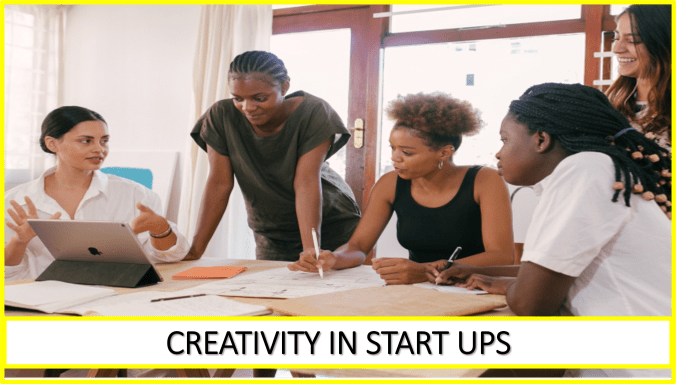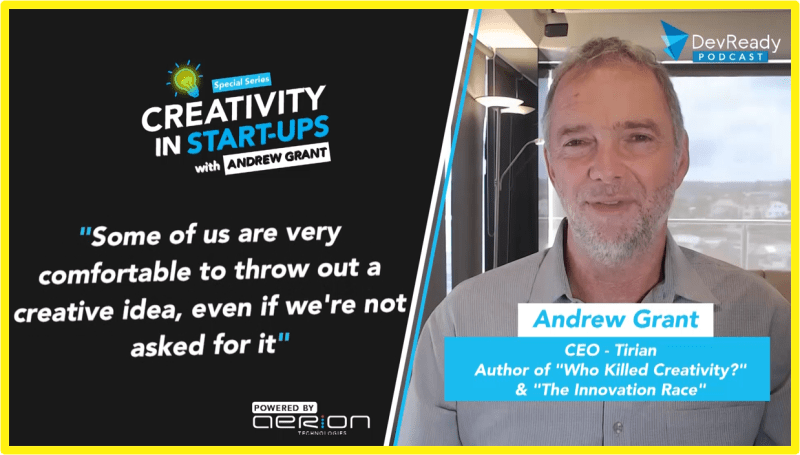The benefits of creativity and innovation in business
If you google “creativity in business” over 571,000,000 results pop up. If you search for “creativity in start-ups” 63,000,000 results appear. And ‘innovation in business’ gives 2.3 millions hits. As Anthony Sapountzis from Aerion Technologies has identified, this means if you’re not looking to bring innovation and creativity to your organisation then your competitors probably are.
Creative approaches to innovation have been found to be essential for ‘superstar’ fast-growth companies. Companies with entrepreneurial orientation, or those that are more innovative and more willing to take risks, have been found to grow faster.1 Companies that innovate are more profitable and grow faster.2
These companies are becoming highly competitive in a cut-throat market.
Growing your ‘adaptive capability’
As an organisation and gathers more resources it develops the ability to recognize changes in market expectations and grow its ‘adaptive capability’. This capability in turn then uncovers new entrepreneurial opportunities for creating value for the organisation.
CB Insights reveals that even large companies are not immune from the impact of the smaller “on-demand” start-ups that are popping up from creatives working in their garages and developing these adaptive capabilities.
Consider how start-ups have been able to take on a range of delivery services traditionally only associated with logistics giants like FedEx and UPS. Deliveries are shifting to speedy on-demand options rather than bulk heavy freight shipping, which has provided new opportunities for agile creative thinkers. Over the past few years, a diverse group of start-ups have cropped up within the shipping and logistics industry. They have been able to lower costs, and streamline operations through applying new on-demand economy concepts.
The opportunities of disintermediation
With the rapid growth of agile small players in the market, everything is now being ‘disintermediated’.
Disintermediation is basically cutting out the middlemen in connection with a transaction or a series of transactions. Instead of going through traditional distribution channels, companies now have the opportunity to deal with customers directly. Dell and Amazon were market leaders in disintermediation. Yet this is now also happening in a range of industries such as finance, supply chain management, and technology.3 Startups are taking a leading position with their biggest advantage, ‘agile creative adaptation.’
This all means that large companies are no longer just at risk of competition from their usual counterparts. Smaller start-ups are now muscling in on the action and gaining ground fast. By focusing on a specific part of the service offering and specialising in this, small companies can now provide competitive bids.
Technology has enabled the rapid growth of agile networks which can easily displace the traditional legacy networks – not only in for-profit businesses but also in other sectors. The same opportunities apply to those able to be creative and innovative in their approach. Consider how small social ideals can now rapidly become global movements through direct access to audiences.
Developing the ambidextrous mindset
Harvard Business School research has revealed that 75% of venture-backed start-ups fail (Forbes quotes the failure rate as 90% of start-ups overall), and a CB Insights study into start-up post-mortems has demonstrated that a lack of ability to establish clear foundations for growth at the leadership level is usually responsible.
98% of the respondents in an in-depth interview study we have conducted with more than 66 executives from a range of organisations around the world identify that it is human factors rather than technical factors that will impact the success of innovation and of innovative growth.
At the core of this, we believe, is the need for both:
- an ‘exploration’ mindset, or an ability to look for breakthrough new ideas and solutions, and
- a ‘preservation’ mindset, or the ability to develop incrementally and establish systems and structures for sustainable growth
This means that it is becoming increasingly important to develop ‘ambidexterity’ – or incorporate both of these mindsets – for addressing future challenges.4
Keys to creative success ‘from start-up to scale-up’
In summary, strategies for achieving creative and more sustainable innovation and growth include:
- increasing adaptive capability – through building diverse creative resources and continually identifying market changes
- looking for opportunities to disrupt the established ways of doing things through disintermediation
- developing individual, team, and organization ambidexterity
We’d love to hear your thoughts with us on how you are making your business or start-up more creative for sustainable innovation and growth!
The ‘Creativity for Start-ups’ Podcast
You can listen to or watch the podcast here: (45 mins) Apple Podcast: | Soundcloud: | Spotify: | YouTube:
‘From Start-up to Scale-up, How Leaders Navigate Scale-up tensions.’ –
This article has been adapted from Dr Gaia Grant’s Research and is available as a deep dive workshop, online simulation and consulting.
Online Coaching Accreditation, Deep Dive Academic Research & Innovation Auditing
ACADEMIC CONFERENCE PAPERS
- Grant, G., Knight, E. and Cuganesan, S. (2017). ‘Rallying around a shared purpose: How the top management team experiences paradoxical demands in strategizing.’ 33rd European Group for Organizational Studies Colloquium, Denmark July 4, 4th International Process Symposium on Process Organization Studies, Greece June 23.
- Grant G., & Dowson, M. (2018). ‘Profiling innovation leaders: Developing and applying a multidimensional measure of paradoxical innovation leadership orientations.’ (Forthcoming)
- Grant G., & Cuganesan, S. (2018). ‘Dual leadership dynamics: Identifying how dual executive leaders navigate competing innovation sustainability demands in growing organisations’, Academy of Management Specialized Conference (AOM), ‘From Start-up to Scale-up’, Tel Aviv, Israel, 17 December.
- Grant G. (2018). ‘From detecting dichotomies to navigating dipoles: How senior leaders negotiate competing demands. 34th European Group for Organizational Studies (EGOS) Colloquium, Tallin, Estonia, 7th July.
References
1. Eshima, Y., & Anderson, B. S. (2017). Firm growth, adaptive capability, and entrepreneurial orientation. Strategic Management Journal, 38(3), 770-779.
2. Coad, A., & Rao, R. (2008). Innovation and firm growth in high-tech sectors: A quantile regression approach. Research Policy, 37(4), 633-648.
3. Ritchie, B., & Brindley, C. (2000). Disintermediation, disintegration and risk in the SME global supply chain, Management Decision, 38(8), 575-583.
Schmidt, R. H., Hackethal, A., & Tyrell, M. (1999). Disintermediation and the role of banks in Europe: An international comparison, Journal of Financial Intermediation, 8(1-2), 36-67.
Fang, L., Ivashina, V., & Lerner, J. (2015). The disintermediation of financial markets: Direct investing in private equity, Journal of Financial Economics, 116(1), 160-178.
4. Grant, G., Cuganesan, S. (2018). Dual leadership dynamics: Identifying how dual executive leaders navigate competing innovation sustainability demands in growing organisations. Academy of Management AOM Specialized Conference: From Start-up to Scale-up: Coping with Organizational Challenges in a Volatile Business Environment, Tel Aviv, Israel, 17-19 December 2018: Academy of Management.
Grant, G., Dowson, M. (2019). Profiling innovation leaders: Developing and applying a multidimensional measure of paradoxical innovation leadership orientations. 35th European Group for Organizational Studies (EGOS) Colloquium, Edinburgh, Scotland: European Group for Organizational Studies (EGOS).




